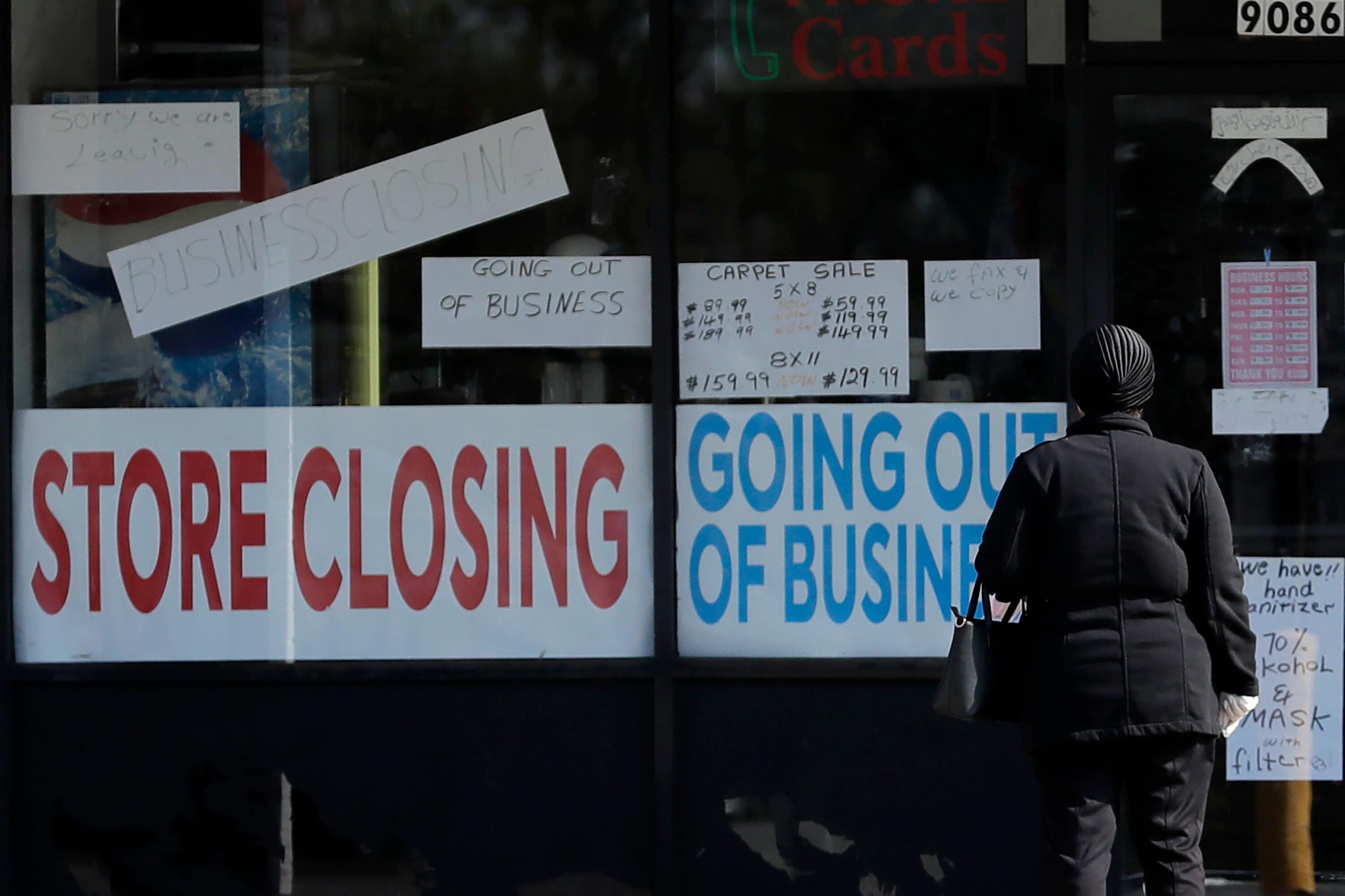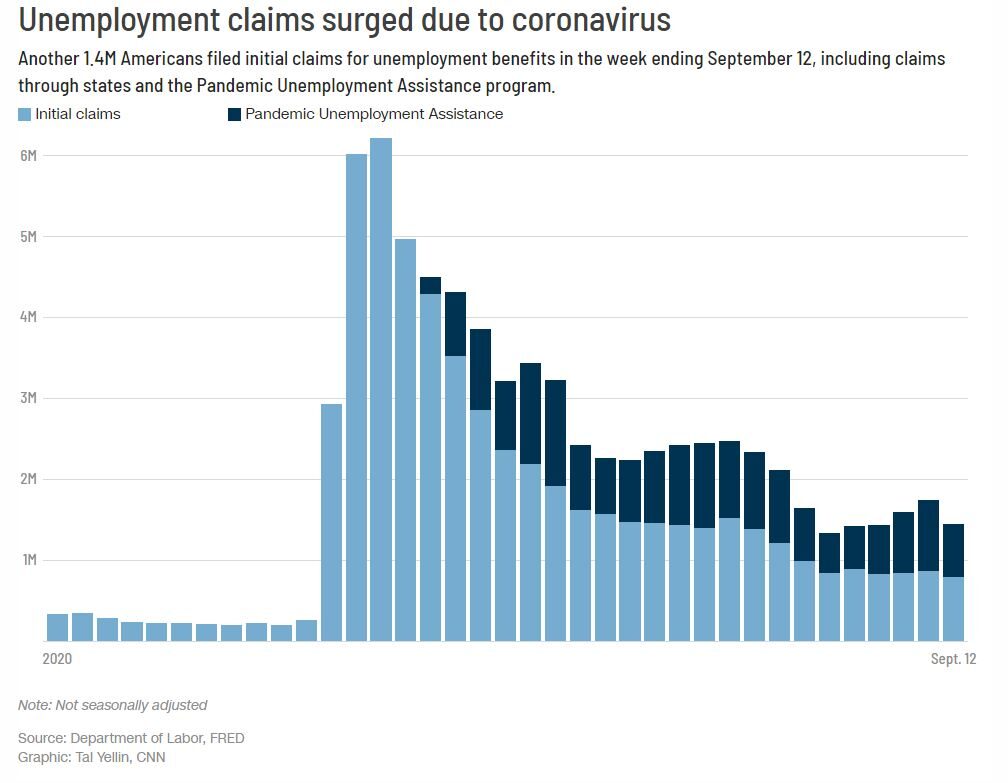
© Nam Y. Huh, The Associated Press
Another 860,000 Americans filed for first-time unemployment benefits last week on a seasonally adjusted basis, the
Department of Labor reported Thursday.
It was another week-on-week decline for jobless claims as the jobs recovery drags on, but the improvements have been slow and the jobs
recovery is running out of steam. Weekly claims have improved since mid-August, when they briefly inched higher.
Despite the improvement, last week's claims were still about four-times higher than they were before the pandemic.
"That just tells you that the labor market has improved, but that it's a long way from maximum employment,"
Federal Reserve Chairman Jerome Powell told reporters during Wednesday's monetary policy update.
Continued jobless claims, counting workers who have filed for benefits for at least two weeks in a row, stood at 12.6 million, down significantly from the number in
last week's report.
Worse still, these numbers don't include claims filed under the government's various other jobless aid programs, such as the Pandemic Unemployment Assistance program, which provides benefits for those who aren't usually eligible, sucha as the self-employed.
Claims for PUA benefits stood at 658,737 last week, down from the prior week. It was their first week-on-week decrease since the start of August.
Adding PUA claims and not seasonally adjusted regular benefit claims together, first-time applications stood at 1.4 million in the week ending September 12 -- down from the week before.

© Department of Labor/CNN
But just how many people are actually collecting unemployment benefits is unclear.
The flood of applicants spurred by the coronavirus shutdowns and the creation of the temporary pandemic unemployment assistance program left federal and state agencies struggling to provide reliable data. It took weeks for many out-of-work Americans to have their claims accepted, resulting in large backlogs that could skew the figures.
What's more, criminals swiftly sought to take advantage of the chaos and filed fraudulent claims, making it even more difficult to determine the true number of people in the unemployment system.
Some experts say there are fewer folks collecting benefits than the number listed in the report. They point to the PUA program as one source of the problem. Part of the problem is that it took time to set up the new system and many of those eligible may not have initially realized they could apply. This left some people applying for multiple weeks of benefits at once, inflating the continued claims data.
"You are not counting actual people, you are counting the number of claims," said Till von Wachter, director of the California Policy Lab, which is working with the state unemployment agency to analyze jobless data during the pandemic. "And it's not necessarily the claims for that particular week."
For example, the policy lab found that while there were roughly 3.5 million Californians who were receiving benefits in mid-August, the number of payments certified topped 6 million.
In the the Golden State, those in the regular state unemployment program have been certifying for roughly two weeks, on average, for most of this year, according to a recent report published the research organization. (California residents submit their certifications every two weeks, not weekly like in many other states.)But those in the pandemic program had been certifying for about four weeks since June, and that figure spiked to more than eight weeks at the end of August. The state recently revised its certification process for claimants in the pandemic program and stepped up its efforts to combat fraud.
Comment: See also: